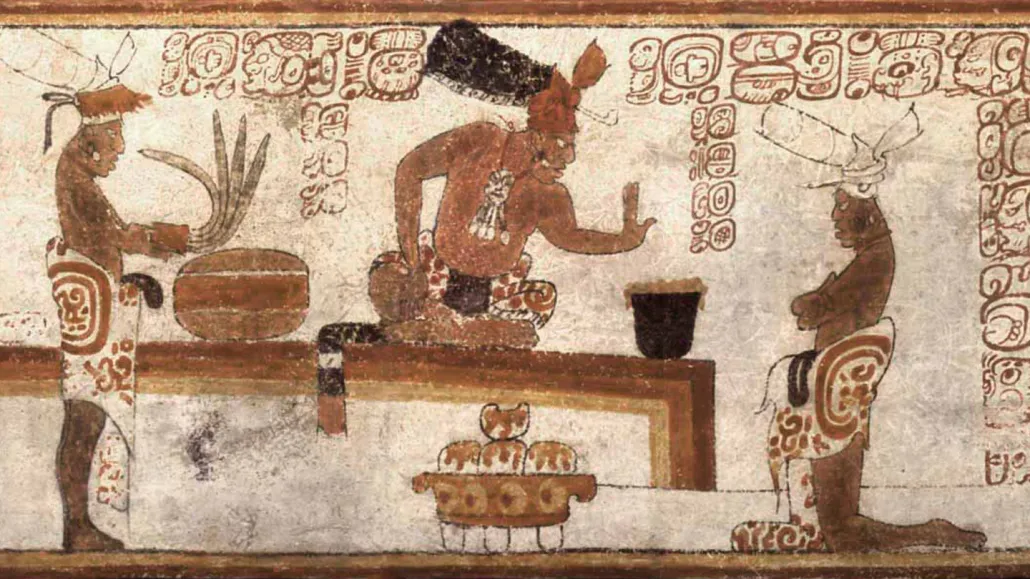In Maya society, cacao use was for everyone, not just royals
Ancient ceramics reveal who had access to the plant, which was seen as sacred

This painting on the side of a Maya vase depicts a ruler speaking to a kneeling attendant while tamales are prepared. The dark brown bowl (right) might contain cacao.
Justin Kerr/mayavase.com







